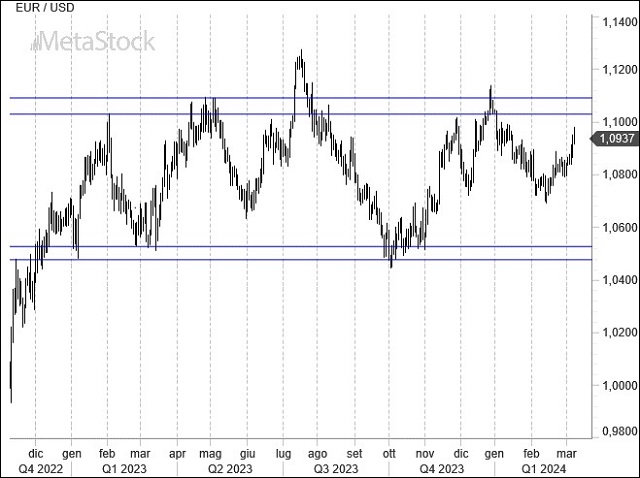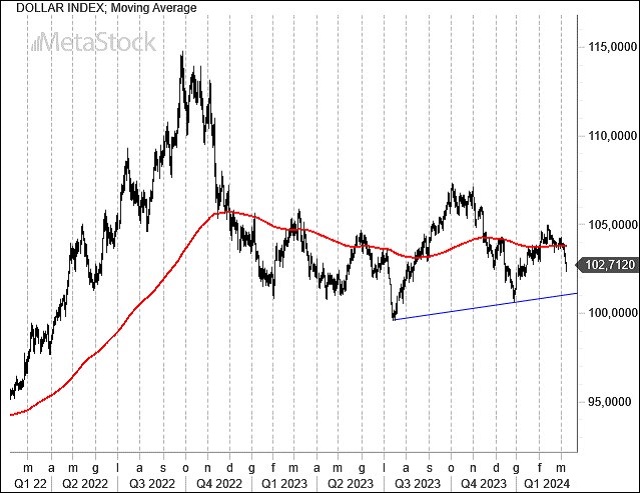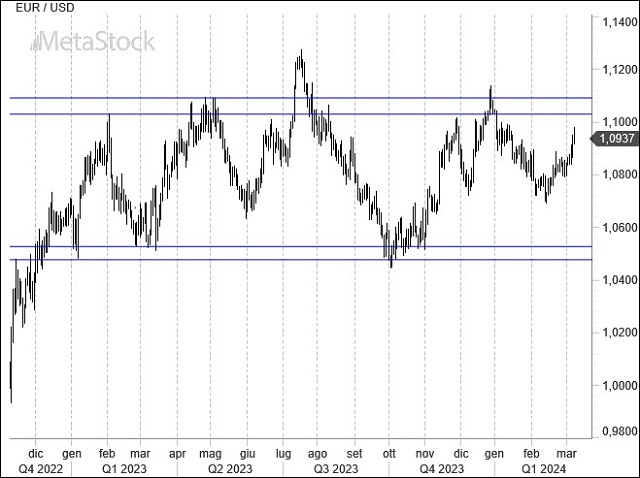- Powell reassures the market that the eagerly awaited rate cuts will occur in 2024, but only when inflation conditions permit. No economic recession is anticipated by the FED, especially after the still very robust employment data.
- The ECB keeps rates unchanged as predicted, and Lagarde defers any decisions on rate cuts to June when all necessary information will be available.
- After the ECB announcement, EUR/USD continues to hold the 1.08 area, a crucial technical element for sustaining a rally that should fend off the risk of a fallback for the single currency, aided by an unfavorable seasonal period now beginning for the dollar.
Powell Signals Cautious Rate Cuts Amid Economic Optimism
Jerome Powell made it clear. In 2024, the cost of money will be reduced, but there’s no hurry. The progress in the fight against inflation is evident but insufficient. The Fed Chair, whose credibility is at an all-time high after taming one of the fastest inflationary spikes in American history, declared before Congress that interest rates have peaked. At some point, interest rates will be reduced in a scenario that cannot exclude sudden accelerations should the economic situation or events concerning financial institutions’ difficulties (e.g., Bancorp) warrant adjustments. Powell has ruled out an economic recession in 2024 and, considering the upcoming political elections, the Fed Chair aims to remain impartial, thereby navigating monetary policy in a neutral manner. February’s employment data showed a still robust job market with 275,000 jobs created and wages growing by 4.3%. The next meeting is scheduled for March 20, following last week’s turn for the ECB.
No news on the interest rates front was expected, but some guidance from Lagarde was anticipated. Concerns mainly revolve around the state of some economies, especially Germany’s after the IFO Institute predicted a mere 0.2% growth for Germany in 2024. Nonetheless, Lagarde indicated to the markets that only by June will there be enough information to decide whether it’s appropriate to reduce the cost of money. Growth forecasts for the entire Eurozone have been lowered.
Technical Analysis – The Euro Stands Firm and Advances
Except for a few rare and short-lived exceptions, the past 16 months of EUR/USD trading are encapsulated in this chart. A directionless trading range between 1.05 and 1.12, with some attempts at breaking out or falling back, mainly driven by speculation on interest rates. Until October 2023, the market’s anticipation of aggressive rate cuts by the Fed gradually gave way to a more dovish narrative that, as of now, does not extend beyond a 75 basis point reduction in the cost of money over the course of 2024. Considering seasonal factors and sentiment, a stretch of the euro below resistances is not ruled out, but it is currently hard to foresee an event that could allow the euro to break upwards, considering the current economic growth differentials or interest rate disparities.

We continue to monitor the evolution of the Dollar Index closely, as its configuration is taking on contours that could become more detrimental later in the year for the greenback. The bearish head and shoulders pattern finds support at 101, below which negative doors would open for a dollar that would then become a currency asset to underweight and hedge in American investments, and to short for those deciding to exploit its weakness from a trading perspective. For now, the situation remains pro-dollar, but technical levels of significance warrant attention.



Leave a Reply
You must be logged in to post a comment.